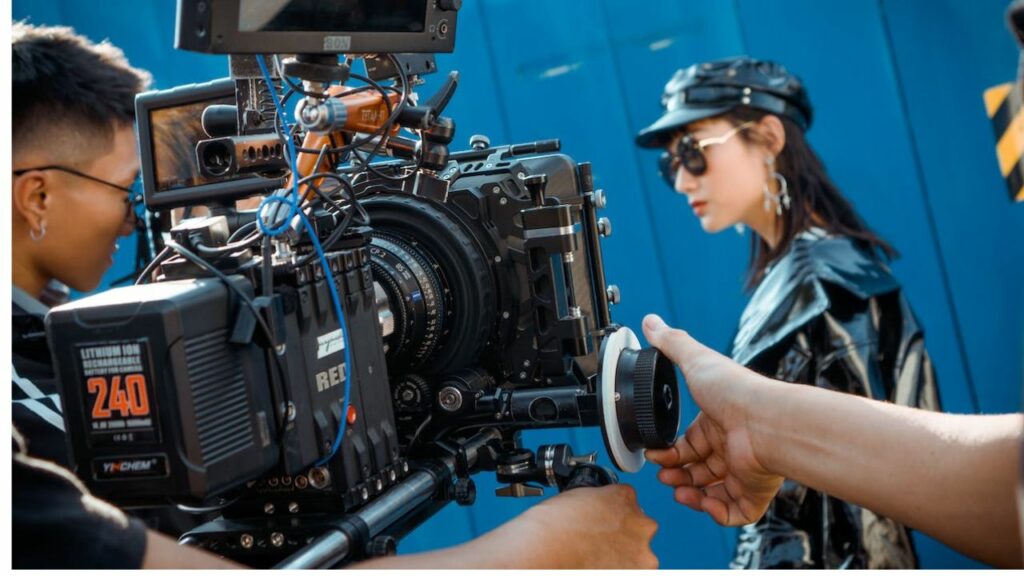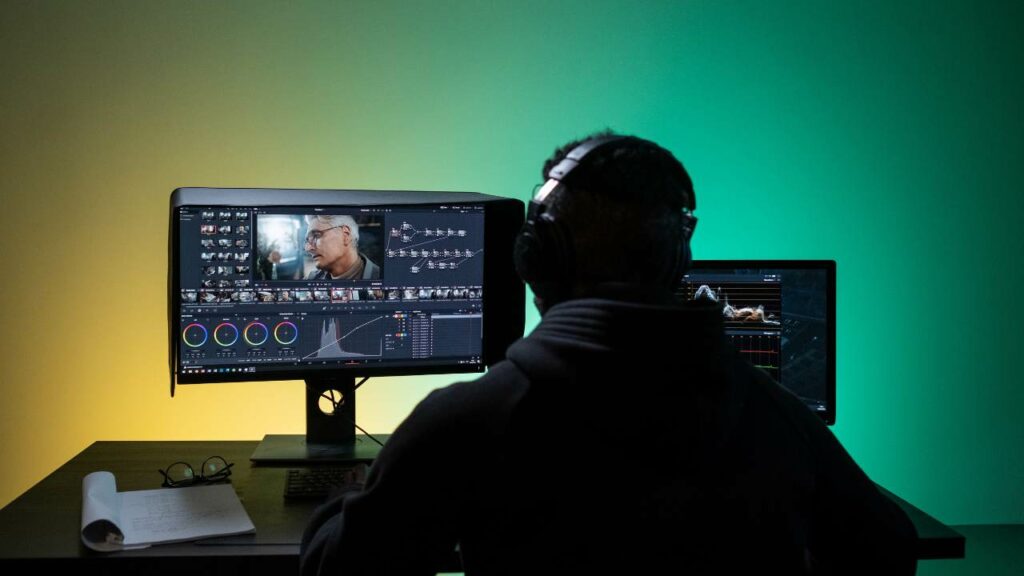In today’s digital age, anyone with a passion for filmmaking can create professional-looking videos without breaking the bank. DIY video production has become increasingly popular as aspiring filmmakers discover various tools and techniques to accomplish impressive results on a budget.
This article will explore some of the top methods and essential equipment for those looking to begin their video production journey.
Pre-Production Planning
Budgeting for Video Production
During the pre-production phase, it is essential to determine your budget for the video production. Estimating the cost of equipment, personnel, locations, and other expenses will help you manage and allocate resources efficiently.
Keep track of your expenses and stay within your budget by using a film budget template or using financial management software.
Remember these key factors while budgeting:
- Equipment costs: camera, lighting, audio, and editing tools
- Personnel expenses: crew, talent, and post-production team fees
- Location costs: permits, rental fees, and transportation
If your goal is to promote your business, see our checklist for creating captivating corporate videos as well.
Scheduling and Organisation
Proper scheduling and organisation are critical during pre-production to ensure a smooth filming process. Divide your project into smaller tasks, assign deadlines and responsibilities, and monitor progress throughout the process. Use planning tools like Milanote to create a production schedule, outline the project, and collaborate with your team.
Here are some scheduling tips for organising your video production:
- Break down the script into scenes and shots
- Estimate time and resources required for each shooting location
- Organise an accurate timetable for casting, location scouting, and rehearsals
- Coordinate with crew members, talent, and other stakeholders
Cast and Crew
Hiring Professionals on a Budget
Even for a DIY video production, it is essential to have skilled cast and crew. Fortunately, there are ways to hire professionals on a budget. One method is to utilise freelance job websites like Upwork or Mandy; these platforms allow filmmakers to post their projects and connect with potential collaborators who are willing to work within their budget constraints.
Another option is to approach film schools or local arts organisations, which may have talented individuals looking for opportunities to expand their portfolios. By offering them the chance to be part of an exciting project, it’s possible to build a team of professionals without overspending.
Recruiting Indie Filmmakers and Enthusiasts
The indie film community is a valuable resource for filmmakers on a budget. Independent filmmakers and enthusiasts often network and collaborate on projects as a way to gain experience and showcase their work. Join online forums or social media groups dedicated to indie filmmaking to find like-minded individuals open to collaborations.
Reach out to individuals who have a passion for film production, and may be willing to learn on the job or contribute their skills in exchange for experience, networking, or portfolio development. Websites such as Stage 32 or Vimeo Groups provide platforms where filmmakers can connect and discuss potential projects.
Building a Diverse Production Team
A well-rounded production team should consist of a mix of experienced professionals and enthusiastic newcomers. This will foster valuable creativity, skill-sharing, and collaboration, without compromising on budget.
When assembling the cast and crew, consider the following:
- Director: Experience matters, but be open to working with newer directors who bring fresh ideas.
- Camera Operator/Cinematographer: Look for someone with a proven track record of great visuals, even if they’re just starting.
- Sound Recordist: Audio quality is crucial; try to find someone with good equipment and the skills to match.
- Editor: This role can be more flexible, allowing participants to collaborate remotely, making it easier to find someone within budget.
- Actors: Look for indie actors, drama students, or amateur theatre performers who are eager to build their showreels.
Location Scouting and Sets
Finding Affordable Locations
Location scouting is a crucial aspect of DIY video production. It involves searching for suitable and affordable locations that match the requirements of your script.
When working on a budget, it’s important to identify spots that are both visually appealing and cost-effective. To begin, familiarise yourself with your script and be aware of the specific settings needed for each scene.
Begin your search by exploring your local area; oftentimes, you can find unique and captivating locations right in your neighbourhood. Consider asking friends and family members for access to their properties or local businesses that might be willing to host your production in exchange for a video promotion or a low fee.
Creating DIY Sets
While scouting for real-life locations can offer authenticity and uniqueness to your video production, creating DIY sets enables you to have complete control over the environment. Building a set from scratch can be a cost-effective solution for filmmakers working on a budget.
There are several ways to create a DIY set:
- Repurpose existing spaces: Rearrange furniture and decorations to transform your home or office into a suitable set. This helps save on rental costs and allows you to customise the space to your needs.
- Use affordable and versatile materials: Purchase simple materials such as PVC pipes, plywood, and affordable fabrics to build your own set pieces. These materials can be easily painted and modified to achieve the desired look.
- Utilise green screens: If your budget allows, invest in a green screen. It enables you to add digital background images during post-production, further reducing location costs.
Gear and Equipment
Camera Choices and Recommendations
When it comes to DIY video production, choosing the right camera is essential. For those on a budget, it’s critical to find a camera that offers the best balance between cost and quality.
An iPhone can be a great option for budding filmmakers, as it is already a ubiquitous device with a decent camera built-in. Additionally, there are plenty of affordable, high-quality cameras out there that provide manual controls and a Full HD resolution, such as the Panasonic Lumix G7 and Canon EOS M50.
Top Tripods for Filmmakers
A sturdy tripod is crucial for stable shots and smooth camera movements. Below are some budget-friendly tripods that won’t break the bank:
- AmazonBasics 60-Inch Lightweight Tripod: An entry-level, lightweight tripod with adjustable legs suitable for small cameras and smartphones.
- Neewer Carbon Fiber 66-inch Camera Tripod: A lightweight and portable option with a 360-degree ball head for smooth panning and tilting.
- Manfrotto Compact Action Aluminium Tripod: A durable tripod with a joystick head for easy and quick camera control.
Lighting Essentials
Proper lighting can elevate a film’s production value and can be achieved without overspending. Here are some essential lighting tools and techniques for filmmakers on a budget:
- Softbox lights: Affordable and versatile, softboxes provide soft and diffused light, ideal for interviews and indoor scenes.
- DIY reflectors: For those looking to cut costs further, aluminium foil, white foam boards, or even a car sunshade can act as budget-friendly reflectors to bounce light and fill in shadows.
- LED panels: Portable LED panels can be used to add a continuous, adjustable light source for outdoor shoots or additional fill light in indoor scenes.
Renting Equipment
For filmmakers who may not have the budget to purchase all the necessary gear, renting equipment is an alternative worth exploring. Renting gear not only saves on initial investment costs but also allows flexibility in trying different setups before committing to a purchase.
Production Techniques
Maximising Video Quality on a Budget
One of the most crucial aspects of DIY video production is maintaining high-quality output despite working within a limited budget. Focusing on elements such as lighting, sound, and camera stabilisation can significantly enhance your video’s overall quality and make it look more professional.
Good lighting is essential in videography, and it doesn’t have to be expensive. You can achieve remarkable results with some DIY lighting tips such as using reflective surfaces, diffusing natural light or even building your own light bar for less than €60. Experimenting with different lighting scenarios will help you find the right balance for your project.
Sound is another crucial aspect that is often overlooked in low-budget video production. To achieve quality audio, invest in a decent audio recorder and use effective tools to reduce noise. Additionally, carefully selecting your shooting location can help avoid unwanted background noise.
Utilising Props Effectively
In DIY video production, creative use of props can add depth and dimension to your project. Be resourceful when selecting or creating your own props, aiming to achieve both function and visual appeal. This can help immensely in storytelling and enhancing the mood of your video.
When scouting for an ideal shooting location, keep an eye out for interesting elements that could serve as useful props.
Look for items that are easily accessible and familiar to your target audience, which can help in establishing a connection between the viewers and the production.
Post-Production Tips
Editing Your Video on a Budget
When working on a tight budget, it’s crucial to utilise cost-effective tools and techniques in your post-production process. Here, we’ll discuss some key methods to help you create professional-looking videos without breaking the bank.
- Utilise free or low-cost editing software: There are numerous free and affordable video editing programs available. Some popular options include DaVinci Resolve (free), HitFilm Express (free), and Adobe Premiere Pro (subscription-based). These tools offer a range of features and capabilities for filmmakers on a budget.
- Organise your footage: Keeping your raw footage organised will save you time and effort in the post-production process. Create a clear folder structure and label your video clips with descriptive names to quickly locate and access the footage you need during editing.
- Work with proxies: High-quality video files can strain your computer’s resources and slow down the editing process. To overcome this issue, you can edit using smaller, lower-resolution proxy files. Once your edit is complete, reconnect to the original high-quality files for final export.
- Use free or low-cost assets: There are numerous resources available online for free or affordable stock video footage, music, and sound effects. Websites like Incompetech, Freesound, or Pexels offer royalty-free assets you can use in your video projects.
- Leverage colour grading tools: Colour grading helps to establish the look and mood of your video. Many editing software platforms come with built-in colour grading tools and presets, which can help you achieve your desired visual style without spending extra on plugins or colourist services.
- Take advantage of tutorials: There are countless video editing tutorials available online, covering a range of topics and techniques. Use these resources to help improve your skills and knowledge in your chosen editing software and get the most out of your post-production process.
Takeaway
Incorporating these tips and techniques into your video production workflow will help you produce high-quality videos even on a limited budget. Remember, creativity, patience, and resourcefulness are often more important than expensive equipment or software.







